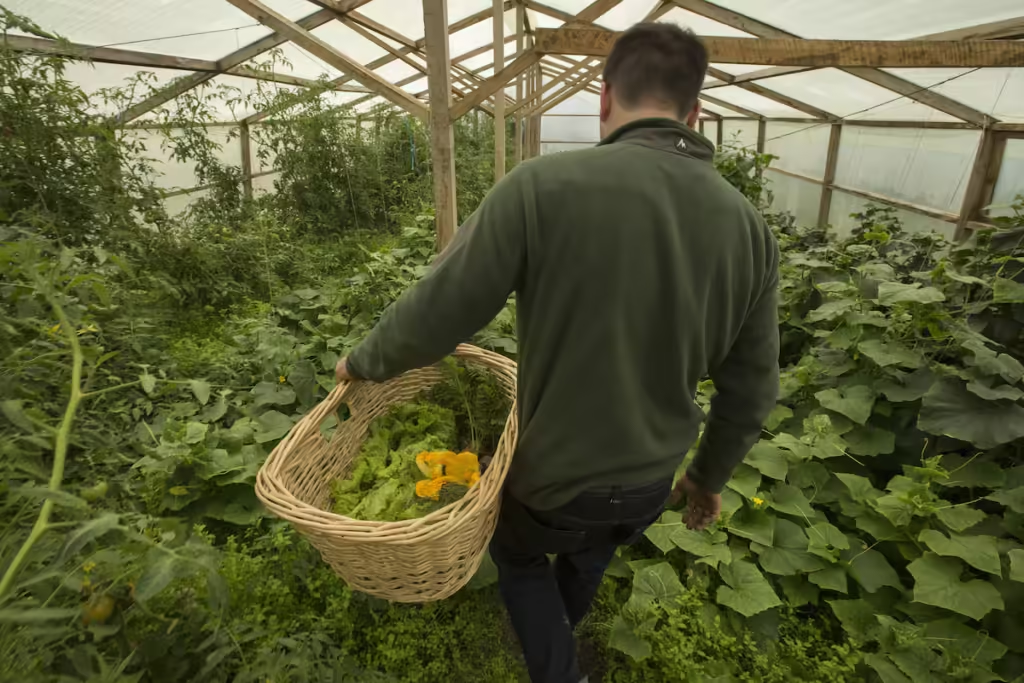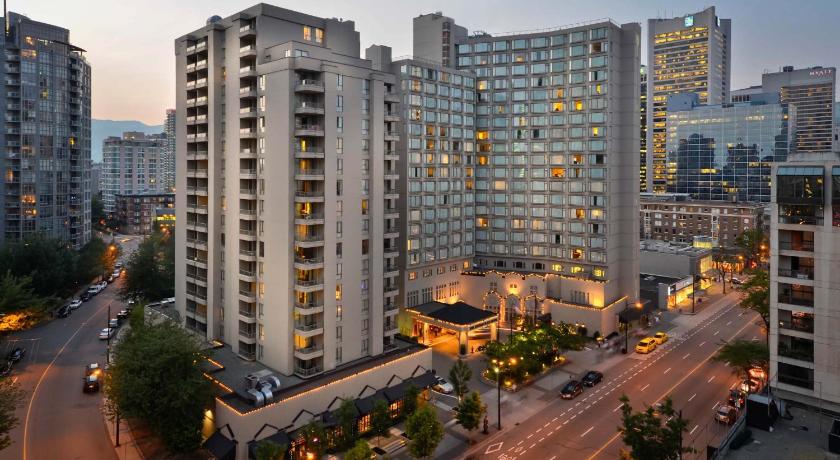
Introduction to Urban Green Initiatives
Urban green initiatives are important strategies in improving environmental sustainability in city landscapes. Growth by cities is accompanied by challenges such as pollution and climate change; therefore, it requires the utilization of green practices in improving the urban environment. Generally speaking, a ‘green city’ is an urban area developed focusing on sustainable development, natural resource management, and even the total health and well-being of a person. It covers a broad range of aspects, including green space, energy-efficient buildings, minimizing wastage, and efficient public transportation.
All these efforts have an imperative role in mitigating the negative impacts of global climate change through enhanced air quality and lower emissions of greenhouse gases. Green cities provide a setting in which the realization of an environmentally conscious goal meets the fundamental social and economic needs, enhances public health, community participation, and economic prosperity. The key action points of these processes are environmental degradation abatement, biodiversity, and enhancement of the livability aspect of urban cities. Hence, the urban green initiatives range from planting trees and creating parks to investing in renewable energy sources and encouraging sustainable urban planning.
Secondly, the green initiative ought to involve the community; public participation creates a sense of ownership and responsibility towards the urban environment. Similarly, making citizens actively involve in planting trees, waste recycling, or community gardens, cities improve civic bonds and develop their ecological footprint. Cities worldwide are undertaking various such greening measures. In general, more significant results of success in implementing practical initiatives and policy were achieved to set standards for the sustainable urban development process. The next sections will thus address cities that lead the process of urban sustainability, translating these key green initiatives into practice.
Vancouver: Paradigm of Green Urbanism

Vancouver represents one of the prime examples of green urbanism and sustainability in a city. Noted for its commitment to environmental responsibility, the city applies an assortment of initiatives toward not only increasing its livability but also greatly reducing its carbon footprint. First is the expansion of parks and green spaces, serving not only as areas of recreation for its residents but playing a role in biodiversity and air quality.
Among such notable policies for sustainability enacted within Vancouver is its initiative for green roofs. This would involve advocating the use of green roofs in both new and existing buildings, reducing the overall urban heat island effect, and then further managing the issues associated with storm water runoff. It aids in better insulation, reduces the consumption of energy, and forms a great habitat for wildlife.
In addition, Vancouver invested in an extensive network of cycling routes, encouraging alternative transportation. The expansion of this across the city fosters a culture of biking, decreasing traffic congestion and reducing levels of pollution. Thereby, more individuals use the bicycle as their principal mode of transportation, thus furthering the objective of establishing Vancouver as the most sustainable metropolitan area in the world.
Besides, it is very well-planned and efficient public transport in Vancouver. The city has thrown a well-thrown network of buses, SkyTrain, and SeaBus services internally, which makes it quite feasible for the residents of the city to avoid using personal vehicles. As a matter of fact, Vancouver stands as an example of dedication towards mitigating greenhouse gas emissions and fostering sustainable urban development by improving access and reliability in public transit options.
Through such initiatives and programs, Vancouver remains at the forefront of urban sustainability and a shining example for other cities across the world to emulate in pursuit of a greener future.
Toronto: A Green City on the Move
Toronto is a beacon for urban sustainability in Canada, with a very progressive attitude toward making its cityscape green. This mainly comprises the development of new parks and urban gardens to make the ecological landscape of the urban environment more handsome. The city has pledged to expand green spaces, while many parks are transforming into active community hubs that help drive local biodiversity and give residents access to necessary recreation space. These will not only be aesthetic undertakings but also very important in improving air quality, soothing urban heat, and giving relief to wildlife in urban areas.
These green aspirations find their realization in the development of the Toronto Green Standard, applying sustainable building throughout the city. This standard invites developers to include any and all types of environmentally friendly features into their projects, focusing attention on energy efficiency, water conservation, and reduction in greenhouse gas emissions. Toronto sets guidelines not just to inform but to encourage a shift towards sustainable practices within the construction sector-to a greener urban fabric.
In the same vein, the commitment of Toronto to improving mass transit serves as another vital part of the sustainability plan. With the continuous expansion and upgrading of the transit system, Toronto has really opened up avenues of travel. This means allowing greater use of sustainable public transportation modes by citizens instead of personal vehicle use. Not only does this promote ease on the roads, but in great ways, it also contributes to reductions in the city’s carbon footprint. Initiatives such as dedicated bus lanes, better cycling infrastructure, and electric in-transit fleets further manifest the city’s commitment to facilitating sustainable urban mobility.
On the whole, Toronto’s approach in terms of greening the city, regulations concerning development, and public transportation is turning out to be a strong driver toward its ambition for leadership in sustainability. With these cumulative effects, the city is creating an enabling environment for a healthier, more sustainable urban life for forthcoming generations.
Portland: The Green Capital of the U.S.

Portland, Oregon has persistently been cited as one of the greenest cities in the United States, and its portfolio displays a multitude of sustainable practices and policies. Included among many such far-reaching measures that make Portland stand out in terms of sustainability, its quite rare Urban Growth Boundary seeks to contain urban sprawl and preserve the natural landscapes that surround the city. This boundary is to protect valuable agricultural land and natural habitat but also to promote compact, efficient urban development. Hence, Portland has developed a lively urban center promoting sustainable living and reducing the reliance on cars.
Public transportation plays an essential role in Portland’s environmental policy. Residents love the city because it has a wide network of light rails, buses, and streetcars to access alternate transportation easily. The huge investment in public transit reduces the use of personal vehicles and results in lower greenhouse gas emissions. Likewise, Portland has taken various initiatives in the development and building of cycling routes by including an extended network of bike lanes and bike-sharing programs that motivate active transportation within the city’s residents.
Yet another strong cornerstone of Portland’s model for sustainability is its commitment to renewable energy. The city has invested tens of millions of dollars in solar and wind energy projects as a means of reducing reliance on fossil fuels. Local policies further encourage the adoption of energy-efficient technologies and practices at the residential and commercial levels. Incorporation of green roofs and other eco-friendly design principles into urban architecture further underlines the fact that Portland works in harmony with nature.
With these broad-reaching policies, Portland has become a leader in showing how a city can emphasize green urban living. Its initiatives reveal the importance of integrating sustainability into each aspect of city planning for an ever-green future.
Common Themes within Urban Green Initiatives
Vancouver, Toronto, and Portland have assumed leadership roles in urban sustainability, demonstrating their commitment to friendly environmental neighborhoods. Strong common threads running through these cities include stepping up green initiatives by involving the community in planning and implementation. This creates accountability for the project’s achievements, ensuring that projects meet the needs of the community. For instance, in Vancouver, where many programs have been created by its residents, there is a higher acceptance and participation in the work of sustainability.
More significantly, all three cities have clear-cut goals on sustainability to lead the interventions put in place. These goals usually involve reduction in carbon emission, improving public transport, or increasing green spaces. This comprehensive Climate Action Strategy undertaken by the Toronto is representative of a city-wide initiative for the reduction in greenhouse gas emissions by 30 percent below the levels in 1990 by the year 2020 and really epitomizes a commitment to strong, quantifiable objectives. Similarly, Portland’s Climate Action Plan encompasses a goal of 100% renewable energy powering the city-a bold yet achievable vision for the urban future of sustainability.
Another common denominator among the mentioned cities is embracing new practices and technologies that should make urban living more sustainable. In this perspective, examples include the fact that Vancouver has tapped into green building practices by implementing energy-efficient designs into its new constructions. These are investments to develop a thriving urban ecosystem in Portland, from green roofs and rain gardens that incorporate biodiversity habitats with stormwater management. Adaptive strategies and the integration of new technologies form the core components in tackling a range of environmental challenges towards a greener urban core.
These themes of community involvement, clearly defined sustainability goals, and practice innovation contain within them what makes Vancouver, Toronto, and Portland leaders in sustainable urban living. Addressing these aspects, such cities positively influence not only the ecological footprint but even the quality of life of the populace.
Issues Confronted by Green Cities

Despite the good strides green cities make to promote sustainability in an urban environment, various challenges hinder their development. One of the more significant complications is budgetary constraints. Most green projects entail heavy financing for infrastructure upgrades, renewable energy ventures, and public transportation systems. But city planners often have to compromise on long-term sustainability initiatives for shorter-term needs because of budgetary constraints. Inadequate funding delays or scales back innovative green solutions, which in turn hurts a city’s effort toward greening.
Another significant barrier to green cities is public resistance. People are skeptical of new policies and, therefore, inconveniences related to the sustainability of urban projects, such as tax increase to finance green initiatives or temporary disruptions related to infrastructure renovations. This might also manifest in the form of demonstrations that people hold or even demands to revise or completely reject sustainable development plans. Such fears can be assuaged through training the communities through campaigns and public forums so that they feel responsible and a part of the green project being undertaken within the city.
The contribution of urban sprawl is yet another challenge facing cities that want to be sustainable. Most populations result in expansion within the cities into the surrounding areas, thereby increasing automobile dependency and making them more greenhouse gas emission-intensive. Urban sprawl can lead to the degradation of habitats. It creates a challenge for city planners who must balance growth with environmental protection. Counteractive trends can be fostered in cities by adopting smart growth strategies, emphasizing developing denser, mixed-use neighborhoods with a combination of housing types and commercial activities in the same neighborhood, which facilitates public transportation access and walkability.
Green cities are gaining momentum in sustainable urbanization, but these projects face various challenges regarding funding, public perception, and urban sprawl. Overcoming these challenges will help green cities achieve success and long-term effectiveness in terms of their sustainability initiatives.
The Role of Citizens in Urban Greening
The movement toward greener urban areas is not only a matter of governments and city planners; it relies a great deal on active involvement by citizens in the process. Leading in the struggle for urban sustainability, different grassroots movements have cropped up to engage the local community in elevating their surroundings. These movements usually undertake projects that tackle environmental health alongside community well-being as a commitment of the residents to transforming their neighborhoods.

One prominent way that citizens take part in urban greening has to do with the development of community gardens. Community gardens provide plots, crucial green areas in highly populated centers, for residents to grow food of their own, encourage biodiversity, and social connections. As a result, community gardens act as educational platforms through which citizens can learn about sustainable gardening practices, locally grown produce, and ecological conservation. By caring for these plots, citizens are not only beautifying their communities but also providing food security and environmental sensitivity.
Aside from community gardens, urban greening has also been directed at volunteer programs worldwide. Most cities have clean-up days, tree-planting programs, and awareness drives where residents, too, can participate in the improvement of neighborhood greenery. These programs not only meet immediate needs in the environment but also develop ownership and pride among participants, so as to enable them to take further action toward their sustainability. Indeed, evidence abounds that the greening projects involving active citizens tend to request more, hence making more lasting impacts on the urban environment.
On the whole, it is a citizen’s participation that is deemed a major key for long-term success regarding sustainability of a city. Moreover, engaged citizens build community and show that together people have the power to do much in greening and making cities more livable. With grassroots movements, with community gardens, and with volunteer programs alike, residents are definitely vital to altering a future pertaining to urban sustainability.
The Impact of Green Cities on Public Health
The focus on urban sustainability has pushed the concept of green cities to the forefront of public discussion. Green urban areas, ranging from parks and community gardens to green roofs, have a significant effect on public health because of their contribution to the mental and physical health of the population. Studies indicate that those who live in areas with abundant greenery exhibit lower levels of stress and anxiety, which again directly correlates with better mental health. Nature is a soothing force and yet brings people out and allows for social interaction, community bonding that can be applied to strengthen psychological resilience.
More than this, green cities contribute to physical health through their cleaning of the air and making opportunities available for physical activity. Urban parks offer places for physical exercise such as walking, jogging, or playing other recreational games. Studies have shown that individuals who have parks in their vicinity are seen to participate more regularly in routine physical activity, thus having lower obesity rates and health problems related to obesity, such as hypertension and diabetes. At the same time, green infrastructure filters out all pollutants, hence enhancing air quality by ensuring fewer respiratory illnesses among the masses.
Besides the direct health benefits, green cities also tend to install sustainable practices that lead to overall environmental quality. The reduced urban heat brought on by increased vegetation in a city lowers the incidence of heat-related illnesses, while improving biodiversity. As the ecosystems begin to thrive within urban confines, residents further benefit from cleaner water and enhanced local food sources through community gardens. In summary, the adoption of green practices in urban centres has great implications for public health-a healthier, active community for all its residents.
Trends in Future Urban Green Initiatives
The landscape of urban sustainability is evolving rapidly due to the rapid adoption of cities with green initiatives as countermeasures to environmental challenges and improving residents’ quality of life. The most important emergent trend now represents the involvement of technology in green space management and care. Smart technology-i.e., sensors and data analytics-enables precise monitoring of urban ecosystems for optimum resource utilization. For instance, smart irrigation systems can be installed in cities that adapt water consumption according to weather conditions with a view to minimizing waste and ensuring much healthier plant life.
Additionally, smart cities happen to be in vogue, reflecting the surge towards urban centres increasingly obsessed with sustainability. Smart cities intelligently adopt modern technologies to better the infrastructure, transport, and use of energy by creating seamlessly entwined green spaces within an urban setting. Innovations like green roofs, vertical gardens, and solar-powered parks add not only aesthetic appeal but also increase biodiversity and lower the temperature of urban heat islands. With such cutting-edge solutions at their discretion, cities can be resilient against climate change-the infrastructure adapts to mitigate the negative impacts of climate change.
In the coming years, urban planning will continue to be influenced by climate change, and flexible, adaptive strategies in designing green open spaces become mandatory. This might involve using climate-responsive design principles in guiding park and recreational area development so the areas stay useful and beautiful in light of changing environmental conditions. Some of the cities which have already adopted such green initiatives, as will be explored in this post, will no doubt be at the front line in establishing new standards for urban sustainability.
Moving forward, it is at the juncture of technology and town planning, with deep community involvement, that lies the key to successful green initiatives at the urban core. These combined effects empower cities to mitigate the effects of climate change while building a sustainable, resilient urban environment.
Conclusion: Learning from Leading Green Cities

The progress made by famous green cities serves as a reminder that urban sustainability is indeed not a fad but a much-needed evolution in the ways we think about and relate to our surroundings. For example, cities like Copenhagen, Amsterdam, and even Singapore are experimenting with different approaches in how policy, citizen involvement, and sustainability practices have found their place in the daily lives of their citizens. These cities serve as jam-packed examples of how strong frameworks can lead to active community involvement and significant environmental benefits.
Effective policies are, therefore, necessary for framing urban development toward sustainability. For example, strict regulations on emissions and waste disposal, besides offering incentives on green technology, facilitate transitioning to a clean city environment. On the other hand, cities that actively encourage the participation of citizens engender a shared vision of sustainability. In such urban settings, the residents feel ownership of and thus responsible for their environment due to the involvement they receive in decision-making and the respective sustainability programs.
Concreteness is given to the principles of sustainability through state-of-the-art practices being implemented by leading green cities, such as green roofs, urban forests, and sustainable transport systems. Such initiatives help improve the residents’ quality of life and contribute to the further reduction of climate change effects. Those cities which emphasize renewable energies, waste management efficiency, and green public areas give good testimony that it is doable to balance urban development with ecological protection.
Lessons from such model cities can, therefore, guide the 仿 in pursuit of solutions to the challenges brought about by climate change, pollution, and resource depletion that urban centers are facing around the world. With similar strategies, other cities will find their way of ensuring a resilient and sustainable environment maintained for current and future generations. After all, sustainability within an urban setting is a journey that earnestly calls for the participation of policymakers, communities, and individuals.




